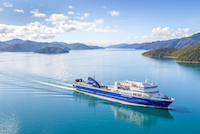New Zealand Language
Official Languages
While English is the predominant language spoken in New Zealand, there are two actual official languages in New Zealand. Māori became an official language in 1987 while in April 2006, New Zealand became the first country to declare sign language as an official language, alongside Māori.
New Zealand Sign Language, or NZSL, is the main language of the deaf community in New Zealand.
Te Reo Māori - the Māori Language
Māori is only used in New Zealand and nowhere else in the world. Despite its official status, the language continues to struggle against being lost.
In the 1840 Treaty of Waitangi, Queen Victoria promised the Māori that their language would be protected.
However, Māori language was discouraged in schools, either formally or informally, and some elders can remember being punished for speaking the language. The Māori language was in danger of dying out, as by the 1920's only a few schools taught Māori grammar and many parents encouraged their children to learn English. 'Korero Pakeha' (Speak English) was seen as essential as it was needed for the workplace and other activities.
It is only recently that the Māori language has gathered widespread support. In the present, the Māori language is commonly used in the media and at school.
A recent survey by the New Zealand government shows about 130,000 people speak some Māori.
A visit to New Zealand will introduce you to many Māori place names, such as Onehunga, Whangamomona, Kahikatea and Nguru. There are also many Māori cultural attractions and places that you can visit to meet the Māori people, learn of their heritage and traditions and try their food.
Learn some Māori
The Māori language has a logical structure, with very consistent rules of pronunciation. It consists of five vowel sounds: a e i o u ('a' as in 'car', 'e' as in 'egg', 'i' like the 'ee' in 'tee', 'o' (pronounced or), 'u' like an 'o' in 'to'). There are eight consonants in Māori similar to those in English - 'h', 'k', 'm', 'n', 'p', 'r', 't', and 'w'. There are also two different consonants - 'wh' and 'ng'. Many Māori pronounce the 'wh' sound similar to our 'f'. The 'ng' is similar to our own 'ng' sound in a word like 'sing', except that in Māori, words can start with 'ng'.
- Kia ora - Hello
- Kia ora tatou - Hello everyone
- Tena koe - Greetings to you (said to one person)
- Tena koutou - Greeting to you all
- Haere mai - Welcome
- Nau mai - Welcome
- Kei te pehea koe? - How's it going?
- Kei te pai - Good
- Tino pai - Really good
- Haere ra - Farewell
- Ka kite ano - Until I see you again (Bye)
- Hei konei ra - See you later
View more information about the Māori culture.
View more key facts and information about New Zealand.













